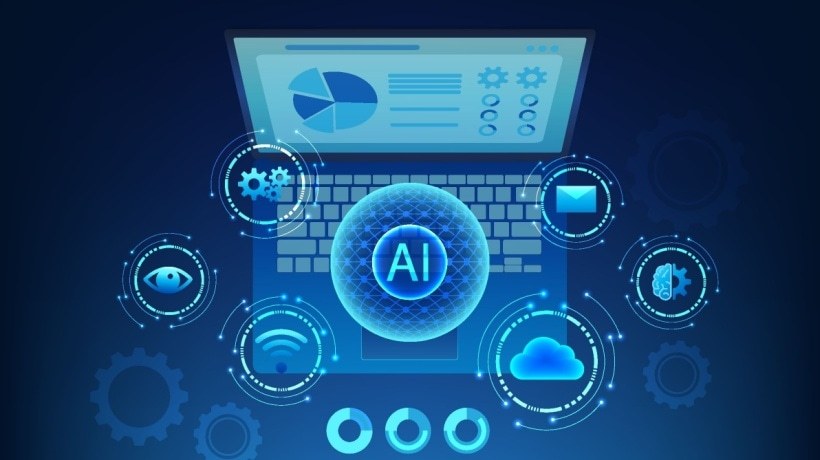AI-Agents Are Transforming On-The-Job Learning
Imagine an always-on learning partner that knows what you don't, nudges you at just the right moment, and turns busy work into bite-sized growth. That's the promise of learning co-pilots—intelligent AI agents embedded into daily workflows to guide, teach, and coach employees at scale. Not a replacement for instructors or mentors, these co-pilots augment human capability: they make learning contextual, timely, and measurable. In this article, we'll unpack what learning co-pilots are, why they matter now, how they work, useful business cases, pitfalls to watch, and practical steps to start putting them to work across your organization.
In this article, you'll find...
- What Is A Learning Co-Pilot?
- Why Learning Co-Pilots Matter (Now)
- How Learning Co-Pilots Work (A High-Level View)
- Real Use Cases That Drive ROI
- Design Principles For Effective Learning Co-Pilots
- Challenges And How To Mitigate Them
- Measuring Success: What To Track
- A Practical Road Map To Start Today
- The Future: Co-Pilots As Culture Builders
- Conclusion: The New Era Of Human + AI Growth
What Is A Learning Co-Pilot?
A learning co-pilot is an AI-driven assistant designed to support employee learning and performance within the tools and workflows people already use. Think of it as a hybrid of an adaptive tutor, a smart knowledge base, and a performance coach integrated into email, chat, CRM, ticketing systems, IDEs, or learning platforms. Their key characteristics are that they are:
- Contextual
It surfaces learning relevant to the exact task or problem at hand (e.g., a sales script when composing an outreach email, or a secure coding pattern when committing code) - Proactive
It nudges users with micro-lessons, checklists, or corrective feedback when it detects knowledge gaps or risky behavior. - Personalized
It adapts content and pacing to an individual's current skills level, role, and learning history. - Actionable
It focuses on "learning in the flow of work"—short, applicable interventions rather than long, generic courses. - Measurable
It captures signals about performance improvements and learning outcomes for continuous optimization.
Why Learning Co-Pilots Matter (Now)
Three big trends make learning co-pilots a business imperative:
- Work and learning are converging
Employees don't have time for long formal courses. Organizations need learning that happens while people work—right in the moment of need. - Skill half-lives are shrinking
With rapid tech and process changes, continuous micro-learning is the only sustainable way to keep teams capable and confident. - AI can scale human coaching
Good coaching is costly and inconsistent; AI can replicate best practices, deliver them 24/7, and tailor them per individual at scale.
Put together, learning co-pilots offer a way to build capabilities faster, reduce error rates, boost productivity, and democratize coaching across levels and geographies.
How Learning Co-Pilots Work (A High-Level View)
At a technical and operational level, learning co-pilots stitch together a few components:
- Signals and context
Real-time data from apps (e.g., tickets, emails, code commits, CRM records) plus user profile and learning history. - Knowledge layer
Curated training content, SOPs, playbooks, and subject matter expertise (can be company content plus public resources) - AI engine
Models that detect intent, identify gaps, generate micro-lessons or prompts, and personalize recommendations. - Delivery layer
UI/UX embedded where work happens—chatbots, sidebar widgets, overlays, notifications, or calendar nudges. - Feedback loop
Telemetry on adoption, performance changes, and outcomes so the system learns what works.
Example flow
A customer success rep opens a complex account issue. The co-pilot recognizes keywords and suggests a two-minute micro-lesson on negotiation scripts, offers templated replies, and nudges the rep to schedule a follow-up. It logs the interaction and measures whether the suggested steps reduced resolution time or escalations.
Real Use Cases That Drive ROI
Learning co-pilots can be applied across functions. Here are tangible examples for agentic AI ROI:
- Sales
Real-time pitch coaching, objection handling prompts during calls, and dynamic playbooks based on prospect profile—improving conversion rates. - Customer support
Inline troubleshooting guides, suggested macros, and next-best-action recommendations that shorten resolution time and raise CSAT. - Software engineering
Intelligent code review assistants that suggest secure patterns, point out anti-patterns, and link to short tutorials—reducing defects and ramp time. - Operations and compliance
On-the-job checklists and policy reminders during critical workflows to lower compliance risk. - Learning and Development (L&D)
Automating onboarding flows with micro-learning checkpoints, tailored learning paths, and skills gap diagnostics.
Because interventions are contextual and brief, they're more likely to be used and to influence behavior—and that's where the returns show up.
Design Principles For Effective Learning Co-Pilots
When building or choosing a learning co-pilot, prioritize these principles:
- Job-centric learning
Align every suggestion to a real task or outcome, not just abstract knowledge. - Micro and modular
Break learning into 30–300 second modules that are actionable and re-usable. - Explainable
Make it clear why a suggestion is made and provide a quick pathway to deeper content or human help. - Privacy by design
Keep personal and sensitive data safe, and be transparent about how signals are used. - Human-in-the-loop
Allow tweaks from managers and SMEs so the system reflects contextual expertise and cultural nuances. - Measure what matters
Track business KPIs (time to proficiency, error rates, conversion, customer satisfaction) not just vanity usage numbers.
Challenges And How To Mitigate Them
Adoption of learning co-pilots isn't automatic. Watch for these common issues:
- Information overload
Badly tuned agents can interrupt workflow.- Mitigation
Prioritize relevance and control frequency of nudges.
- Mitigation
- Trust and accuracy
If suggestions are wrong, users will ignore or resist the tool.- Mitigation
Start with read-only suggestions, route to SMEs, and build a confidence measure.
- Mitigation
- Change resistance
Employees may fear being monitored.- Mitigation
Emphasize coaching intent, anonymize analytics, and involve employees in design.
- Mitigation
- Content quality and governance
Poor content leads to poor outcomes.- Mitigation
Curate centrally, allow local tailoring, and set clear review cadences.
- Mitigation
- Technical integration
Integrating with legacy systems can be hard.- Mitigation
Start with one high-impact integration (e.g., CRM or support tool) and expand.
- Mitigation
Measuring Success: What To Track
Don't rely on vanity metrics. Tie co-pilot metrics to business outcomes:
- Adoption and engagement
Active users, micro-lesson completions, and time to first helpful suggestion. - Learning outcomes
Pre-/post-assessments, ramp time for new hires, and skill proficiency scores. - Performance impact
Error rates, resolution time, conversion rates, deal size, or compliance incidents. - Behavioral change
Frequency of best-practice actions after recommendations (e.g., using templated replies) - ROI
Time saved × employee cost rate, reduction in escalations/penalties, and revenue uplift from higher productivity.
A small initial pilot with clear KPIs helps prove value and secure broader investment.
A Practical Road Map To Start Today
If you want a pragmatic rollout plan, here's a three-phase approach:
Phase 1 — Pilot (6–10 Weeks)
- Pick a single, high-value workflow (e.g., support ticket triage or sales discovery calls)
- Define two to three measurable KPIs (e.g., average handle time, conversion)
- Integrate the learning co-pilot in a read-only mode; gather feedback from a pilot group.
- Iterate content and trigger logic based on real interactions.
Phase 2 — Scale (3–6 Months)
- Open write/assist capabilities after trust is established.
- Add personalization layers (role, experience level)
- Create a governance board for content quality and ethics.
- Begin measuring business outcomes and present results to stakeholders.
Phase 3 — Optimize And Expand (Ongoing)
- Expand to other teams and cross-functional flows.
- Invest in analytics and A/B testing of interventions.
- Blend human coaching with AI insights for complex skills.
- Keep content fresh and aligned to strategy changes.
The Future: Co-Pilots As Culture Builders
Beyond immediate productivity gains, learning co-pilots can influence organizational culture. They normalize continuous feedback, lift the floor on performance across teams, and make growth personal and frictionless. When designed thoughtfully, they can democratize mentorship—embedding institutional knowledge into everyday work and widening access to coaching across levels and geographies.
But the future isn't only technical; it's also ethical and social. Organizations that succeed will balance automation with empathy: protecting privacy, preserving human agency, and ensuring the AI amplifies human strengths rather than penalizes mistakes.
Closing: Start Small, Think Big
Learning co-pilots are not a silver bullet, but they are one of the most practical ways to make learning continuous, contextual, and measurable. Start with a tight pilot that solves a clear business problem, iterate with real users, and scale where you prove impact. The result? A workforce that learns faster, performs better, and feels more supported—because coaching no longer depends on time or geography. It's always available, nestled where work happens, ready to turn moments of friction into moments of growth.
Conclusion: The New Era Of Human + AI Growth
Learning co-pilots mark a meaningful shift in how organizations build capability—from periodic, course-based training to continuous, embedded development. Instead of treating learning as a separate task that happens in classrooms or on LMS platforms, agentic AI enables growth to unfold naturally within everyday workflows. They transform moments of confusion into moments of clarity, and mistakes into low-friction opportunities to improve. In doing so, they raise the floor of performance for every employee, not just those lucky enough to have access to dedicated coaching or mentorship.
This transformation isn't only operational—it's cultural. When learning becomes effortless and always available, employees feel more confident, more supported, and more empowered to take on new challenges. Managers shift from monitoring performance to nurturing potential. L&D leaders evolve from content distributors to strategic enablers of business outcomes. And organizations become more resilient as knowledge is democratized, not siloed.
Of course, adopting learning co-pilots requires thoughtful change management. Trust must be earned, transparency maintained, and the human element never overshadowed. But with the right governance, safeguards, and feedback loops, these AI agents can serve as reliable partners that enhance—not replace—human intelligence and expertise.
The companies that embrace this shift early will gain a crucial advantage: faster upskilling, stronger productivity, and a more engaged workforce that sees learning as a natural part of work, not an interruption. The future of learning isn't just digital—it's dynamic, personalized, and always one click away. Learning co-pilots are here to ensure every employee levels up, every day.









